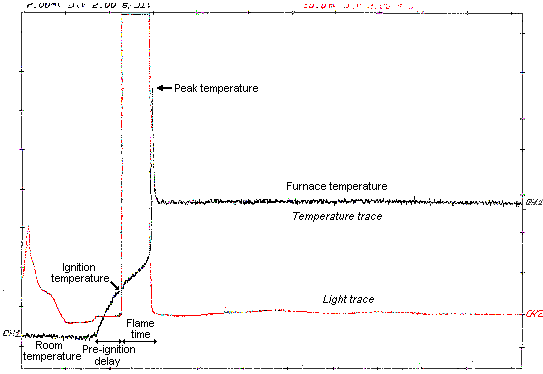
Figure 24: Combustion sequence of a droplet of fuel M2 of do = 0.88 mm burned at 750 °C furnace temperature (horizontal axis: time, s; vertical axis: output voltage (temperature, light), µV)
The temperature of the droplet rises uniformly after insertion until the onset of homogeneous ignition. Simultaneous to ignition, which is observed as a stretched vertical yellow envelope flame, soot is ejected. The amount of soot emitted varies from fuel to fuel, being maximum for the heavy coker gas oils and minimum for the heavy vacuum gas oils.
The droplet temperature continues rising as the flame progresses. The rate of heating at the centre of the droplet decreases, due to cracking and evaporation withdrawing energy from the remaining liquid fuel. A further rapid increase is recorded when the flame disappears. Such an increment is large for the heavy coker gas oils (particularly for M2) and almost imperceptible for the heavy vacuum gas oils. In the case of the heavy coker gas oils the temperature may reach up to 1,450 °C.

Visual observations of the combustion of the heavy coker gas oil M2 reveal the existence of a small carbonaceous residue burning heterogeneously for a very short period of time, which is coincidental with the increase of the droplet temperature. This was confirmed by video recordings performed (see section "5.3. Experimental results"). The existence of a solid residue agrees with the presence of 0.1 % by weight asphaltenes among its constituents. Unfortunately the light emitted by the burning sample is too low for the experimental facility to detect it.
Subsequently the soot trail settles onto the thermocouple wires as it burns out. The temperature registered by the combustion thermocouple returns to that of the furnace. Eventually the soot residue disappears after a period of time which may last several minutes at low furnace temperature and a few seconds at the highest furnace temperatures attempted.
 Previous |  Table of Contents |  Next |